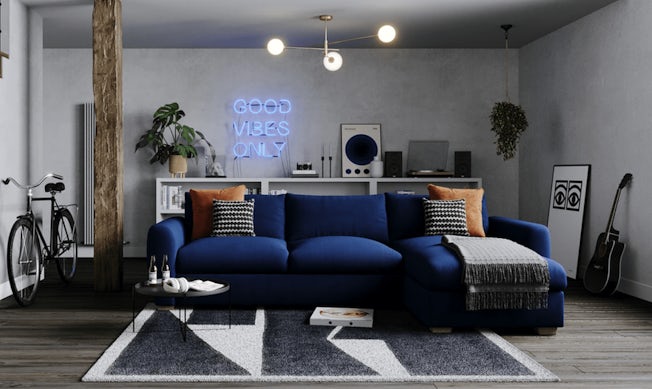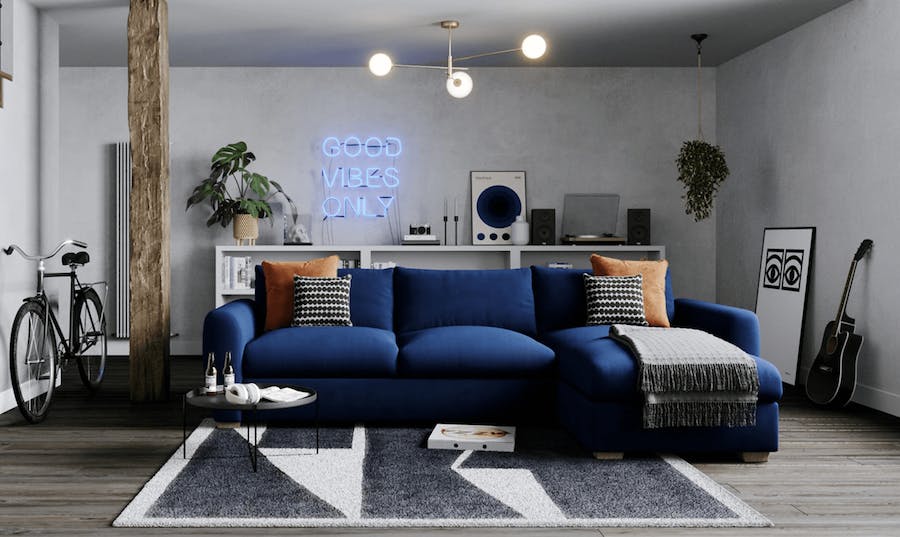Snug CEO Rob Bridgman explains how the sofa-in-a-box company provides a great customer experience, from product through to delivery and customer service.
With consumers spending more time at home than ever before during lockdown, smaller, direct-to-consumer brands in home-related categories have capitalised on new demand (and the subsequent shift to ecommerce). Snug, the furniture retailer or ‘sofa in a box’ company, is one such example, having successfully ridden the wave of the pandemic in order to build on previous growth.
I recently spoke with Snug’s CEO and co-founder, Rob Bridgman, to find out how the brand is differentiating itself from others in the direct-to-consumer space, and what he thinks could be in store for the future of retail, post-pandemic.

Instilling trust and reassurance throughout the path to purchase
Sofa’s are not the easiest thing to sell online, of course, as most consumers typically want to try the product out in person before committing to a purchase. Snug has five showrooms around the UK, but the pandemic has meant that customers have only been able to buy online.
Bridgman explains how Snug’s 30-day trial and no-quibble free returns policy helps to reassure customers before making a purchase. This works alongside reviews, which Bridgman says the company continually learns from in order to evolve its offering. Overall, however, he also cites customer service as the most important element of Snug’s CX – both in terms of encouraging conversion as well as fostering loyalty and generating positive word of mouth post-purchase.
“Being available for customers 24-7 is crucial. That means if a customer has a question at 10pm on a Sunday, we’ll be responding to them, and via the channel that the customer wants to contact us on.”
Week 2, lock down, new flat: Happy to have a sofa to sit on! Thank you @snugsofa pic.twitter.com/bHh8abAjum
— Kelly O’Connor (@kellyoc6) January 9, 2021
This immediacy is something that the furniture industry, irrespective of channel, has typically failed to deliver. “That was one of the real frustrations that led to creating Snug – not only did I have to wait nine weeks for a sofa to turn up when they said it would be six – but I had no visibility on the progress, and I had to make 12 phone calls just to find out where the order was.”
“So, just having that immediate access to someone within Snug – when a customer has got questions or are looking at purchasing – that has been huge for us.”
When it comes to Snug’s immediate priorities, then, Bridgman says it is to “deliver on our customer promise at scale.”
“One of those aspects is making sure our supply chain is resilient, and that we are able to effectively communicate with customers 24-7,” he explains. “For us, we want to make sure that we are giving customers and anyone who contacts us a really personal experience, so every communication and every contact that comes into us – whether it’s through social, email, phone or chat – there’s always someone responding, rather than automating things or putting it through some sort of routing system that encourages people to drop out of the process.”
“We’re very focused on making sure that we communicate and have those one-to-one conversations with everyone. That is both a challenge and an opportunity for us, but it is definitely a focus for this year.”
A focus on speed, portability, and adaptability
While Snug has been operating for around two years, the past 18 months has enabled to company to further build on its ethos of ‘comfort and convenience’. This means comfort in the literal sense, of course, but Bridgman refers not just to “making people feel comfortable in their immediate surroundings,” but also, “in their wider community as well.” He explains how Snug supports the charities Crisis and Eden Reforestation Project – helping the latter to plant 100,000 trees in the last two years.
Alongside brand purpose, there is a focus on convenience, which is where Snug truly aims to differentiate itself, particularly from other furniture retailers. This is also a point of passion for Bridgman, who came up with the idea for Snug based on his own frustrations as a consumer.
“I think this is where most, if not all, sofa brands fall short… We’ve got our average delivery time down to under a week, while the average in the industry is about nine weeks,” he says.
As well as speed, “portability and adaptability” are the two most important elements of Snug’s offering, which is designed to align with the needs of its target audience. “We found our customers were moving home every 18 to 24 months, and a lot of them didn’t employ moving companies – they would do it themselves or use the back of an Uber XL,” says Bridgman.
“The adaptability is key as well – the fact that you can buy a three-seater sofa today, and maybe next year you can buy a ‘snuggler’ and turn it into a corner set up. Where as, if you go into any other sofa retailer and want a corner unit, you specifically have to buy that orientation not knowing what your living situation is going to be in a year or two. It will be a coin flip whether or not it is going to fit.”
Snug calls its product offering (of buildable sofas) “pay as you grow”, which it also believes will be key to business growth in future, rather than diversifying into other categories.
“For a big-ticket purchase we get a high percentage of returning customers which is reassuring, especially when a typical sofa only gets purchased every eight years,” says Bridgman. “But because of the nature of our product, you can start off with a three-seater (which is our flagship product) but then grow that over time.”
@snugsofa Say hello to the newest member of our Snug Family, the Rebel 2 Seater Sofa! #sofainabox #foryoupage #sofachallenge #sofa #fyp
♬ Banana (feat. Shaggy) [DJ FLe – Minisiren Remix] – Conkarah
Building the retail store of the future
While Snug has re-focused its attention to ecommerce during the pandemic, the company has also ensured that its showrooms (and employees) were not wasted, instead connecting online and offline channels in order to build on its customer service promise.
“It’s really about re-purposing those high street locations,” Bridgman explains, “because even when we were closed to the public we still had a stage on which to perform, and the capacity to stream into people’s homes.”
“The industry term I believe is ‘dark stores’, but in our mind it is kind of like this QVC 2.0 – it’s home shopping but it is also on the high street.”
So, while many have predicted the demise of physical retail – or rather, lesser demand due to the growth of ecommerce – Bridgman predicts that it will see more of a transformation in line with new consumer behaviour. “There is, to my mind, a big opportunity when it comes to the high street… We’re looking at building a ‘retail store of the future’ which, for us, is a multi-functional and interactive shop where customers could either walk in or they could stream in (and access one of our store managers through a video link).”
This omni-channel approach is part and parcel of Snug’s customer experience strategy, as well as its overall positioning within the furniture category.
“We are not trying to compete on having a better sofa… For us, it is based on insight, and both personal and professional frustration. I’m a third generation in the furniture industry, but I guess I was naive to the fact that upholstery companies just didn’t listen to their customers or didn’t deliver quickly, didn’t focus on the customer experience, and were I guess too comfortable with the status quo.
“I’ll be careful of using this word because it’s been completely overused, but it’s about disrupting the industry, and also giving the power back to customers so that they have got more choice, more flexibility, and more visibility of the whole process, which should ultimately lead to a better customer experience.”




